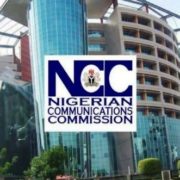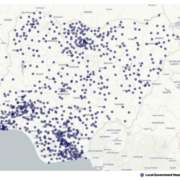By Eric Osiakwan
In Kenya two international cables – Seacom and TEAMS – have arrived but a fierce row has broken out over pricing. On the Government-backed TEAMS cable, Permanent Secretary Bitange Ndemo has said loudly and publicly that rates should come down to nearer US$200 per mbps. The cable’s owners say they have to recoup their money and that there will plenty of time later for prices to come down. Russell Southwood looks at some of the blockages to the benefits the international cables might bring and how they might be overcome.
By 2011, Africa will have eight international fibre cables connecting it to the rest of the world. New infrastructure is already delivering an eight to ten fold reduction in the prices formerly charged by the satellite companies. But the old African mindset of “selling shortage at the highest price” is not changing quickly enough to keep up with the new future of plentiful bandwidth. A number of blockages are emerging that need to be overcome if Africa is to take full advantage of its new fibre assets:
Holding bandwidth prices up
We have sat in rooms with bandwidth providers in at least two countries where they have argued that the new international fibre will not make that much difference to the prices charged to their customers. Indeed, the first move of many of the providers was to simply increase (rather modestly) the bandwidth their customers were receiving, whilst keeping the price the same.
So the new cable owners find themselves arguing what might be called the “SAT position”. When the cable is being built, all the rhetoric is about lowering prices but the moment the cable is implemented, it suddenly becomes about getting back the money as quickly as possible for their investment, despite the long-term nature of cable investment.
Telkom SA claimed to have recouped its investment on SAT3 in eighteen months but it is unlikely with the new lower rates that cable investors will see a full return for a much longer period. Apparently CCK is so cross with this switchover from promising lowered bandwidth costs to trying to keep the price high that it will be investigating price levels on the TEAMS cable.
However, all this price-hiking is short-term as with the arrival of EASSy and its WIOCC consortium, prices will fall sharply again. If that has not occurred WIOCC has a price-fall mechanism that will see bandwidth in the market fall to US$100 per mbps. In East Africa, there has been a lively debate over pricing but expect the same price-hiking tactics in West Africa where media coverage may not be as intense.
Not granting international landing station licences
One of the major issues in West Africa has been the granting, or perhaps we should say the failure, to grant international landing station rights to those building the new international fibre cables. How can this be occurring when everyone at every level has been arguing for cheaper bandwidth? Well, it’s the old self-interests being more powerful than the forces for change and everyone behaving according to the old model of behaviour and protecting the incumbent.
The most extreme example is Senegal where the regulator has delayed granting landing stations to the cables most likely to be first in the race to complete: Glo One and Main One. In more competitive East Africa, the independently-owned Seacom cable was able to either partner with another independent (KDN) or land using a licence in its own name in Tanzania.
But life has not been made that easy in Senegal where Main One is seeking to partner with the only possible alternative to France Telecom-owned Sonatel, Expresso. There is no opportunity to have an independent licence because this might make it too easy to compete with the de-facto monopoly of Sonatel, which is involved in the France Telecom cable initiative ACE. But why blame the regulator when the real delay is coming from Government that takes all the decisions?
The cynic might conclude that these delays will help Sonatel get ACE in place and keep out other cables for as long as possible. Of course, the speedy licensing of Glo One and Main One would prove the cynics wrong but don’t hold your breath.
Rates between landlocked countries
Once the new cheap bandwidth is at the landing stations, the trouble really begins. Operators do much “teeth-sucking” and say “of course, you know that’s not the real price. We have to charge for transit.”
In countries without a landing station, this leaves them in the hands of those accustomed to the old way of doing things. When incumbents dealt only with incumbents for cross-border transit, they both had an informal agreement that they would charge the same high price for each end of the transit. The net result is that prices for cross-border transit remain high. One country we visited recently, it was paying more for the transit to the landing station in a neighbouring country than it was for the onward transmission to Europe.
In East Africa, this is less of a problem as some thought was devoted to the issue and solutions are on the table. With World Bank prompting, the EASSy partners came up with the East African Backbone System that delivers inland bandwidth at more or less the same priceas at the landing station. Seacom has also delivered on its promise of the same price inland as at the landing station for those countries where it has inland partner (Rwanda and Uganda).
But the problem will be much harder to solve in West Africa as the main independent cable Main One has taken the view that its capacity will be delivered by the operators themselves, who will doubtless turn every trick in the book to ensure that prices remain high for the transit portion.
What regulators should be encouraging is regional carriers’ carriers who can compete with the existing telcos who might seek to keep prices high. The West African and Southern African Power Pools have ample fibre capacity to make a reality of this ambition working with independent partners.
High cost of national transit to reach POP or landing station
If cross-border transit rates are a form of highway robbery, then national transit rates show many of the same symptoms. It is cheaper to go from Lagos to Sessimbra in Portugal than it is to go from Lagos to Abajua. If rates are based on distance, then the new international fibre cables have exposed the high rates charged for national backbone delivery.
Not surprisingly, these national transit rates remain high where there are legal or de-facto monopolies. Without competition, it is hardly surprising that the old pattern of charging what you can get away with is maintained. But you cannot have competition at the international level, without it having knock-on consequences at the national level.
National backbone operators will need to improve their efficiency levels or risk others building out their own backbones (where this is allowed). All operators know that in this circumstance they can cut between a third to a half off of the current rates being charged. The choice is a stark one: either you have a price-controlled monopoly with lower prices or you allow operators to compete and get lower prices.
The sceptics will say “But who wants all this new bandwidth? There aren’t the customers. (appropriate shrug of shoulders) This is Africa.” The alternative to this old way of thinking is to have a “low price, high volume” strategy that is about creating volume markets at yes, you guessed it, commodity prices. Then you sell the new customers services and applications on top. In the mobile field, MPesa is the best example of how an Africa-targeted service can take off.
It’s not about relying on the “same old, same old corporates” but about addressing the residential middle classes with Internet in places like Nigeria and Kenya who will provide the “critical mass” for reaching out more widely. It’s about bringing the small-scale companies and NGOs to the party and persuading them of the virtues of using the Internet to get things done more quickly. In short, it needs a strong dose of corporate vision rather than seeing the future through the rear-view mirror of history.





























